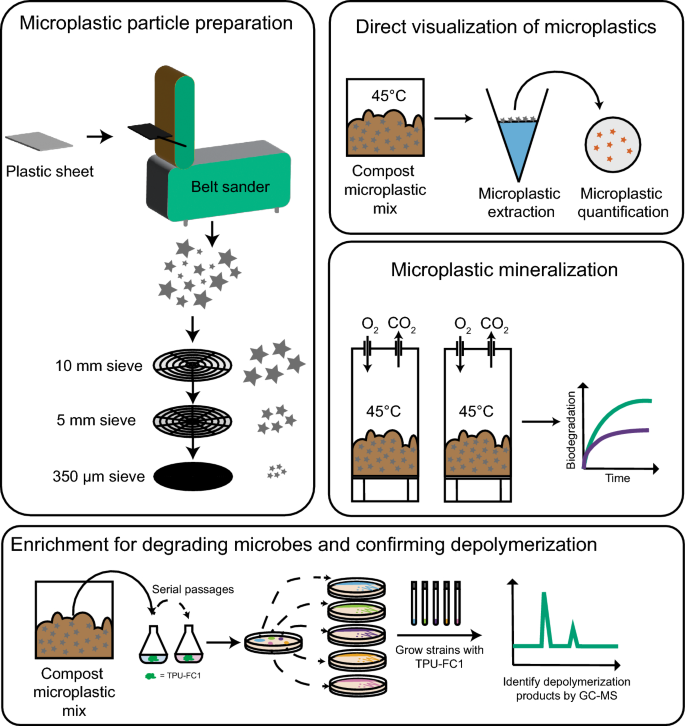2024-03-21 カリフォルニア大学サンタバーバラ校(UCSB)
<関連情報>
- https://news.ucsb.edu/2024/021400/organic-farms-can-have-mixed-effects-pesticide-use-depending-their-neighbors
- https://www.science.org/doi/10.1126/science.adf2572
有機農業が近隣の畑の農薬使用に及ぼす波及効果 Spillover effects of organic agriculture on pesticide use on nearby fields
ASHLEY E. LARSEN, FREDERIK NOACK, AND L. CLAIRE POWERS
Science Published:22 Mar 2024
DOI:https://doi.org/10.1126/science.adf2572
Editor’s summary
Organic agricultural practices are designed to have fewer negative local environmental impacts than intensive agriculture by, for example, using less-harmful pesticides. However, less is known about the effects of organic fields on surrounding farms and thus the net impact of organic agriculture. Organic fields may harbor larger pest populations or, alternately, organisms that naturally control pests, leading to potential spillover of organisms to neighboring fields. Using pesticide application data from Kern County, California, Larsen et al. found that organic fields surrounded by more organic agriculture used pesticides less, whereas conventional fields surrounded by organic agriculture used them more (see the Perspective by Lichtenberg). Clustering organic fields could reduce pesticide use on both organic and conventional fields. —Bianca Lopez
Structured Abstract
INTRODUCTION
Reducing the environmental footprint of agriculture while maintaining or improving yields is a major challenge of the coming decades. Organic agriculture is often suggested as a means to improve agricultural sustainability through more natural production methods, particularly in regards to pesticides and pest control. However, the environmental impacts of organic production practices are only partially understood and it remains unknown whether such production practices have spillover impacts, beneficial or not, for surrounding producers.
RATIONALE
Organic crop production includes a suite of on-farm practices that differ from conventional management techniques. These practices include using different pest management approaches, which may result in the spillover of agricultural pests and/or their natural enemies to nearby agricultural fields resulting in higher or lower pest damage and pesticide use. Here we seek to identify the direct and spillover effects of surrounding organic cropland on pesticide use on both organic and conventional crop fields. To do so, we used field-level pesticide use and crop data for ~14,000 fields over seven years in Kern County, California, alongside US-wide data on organic agriculture and pesticide use.
RESULTS
We find that the presence of surrounding organic cropland generally leads to a decrease in pesticide use on organic fields, which appears mostly driven by a reduction in insecticides. By contrast, surrounding organic agriculture leads to a small but significant increase in pesticide use on conventional fields. Based on these results, we simulate how changing the proportion of organic cropland changes net insecticide use. While net insecticide use decreases at high levels of organic cropland, at commonly observed levels net insecticide use increases due to the positive (insecticide increasing) effects of surrounding organic cropland on conventional fields. This effect can be entirely mitigated by clustering organic cropland. A coarser, national-scale analysis further evidences the inverted U-shape relationship between organic cropland area and net insecticide use.
CONCLUSION
These results suggest that efforts to increase organic cropland could lead to a decrease in pesticide use, but that is more likely at higher levels of organic cropland in the landscape. At low levels of organic cropland, the opposite is expected. Spatially clustering organic fields and spatially separating organic and conventional fields could reduce the environmental footprint of both organic and conventional croplands.
Increases in surrounding organic cropland leads to a rise in pesticide use on conventional fields and a decrease on organic fields.
We hypothesize this is due to a spillover of both pests and natural enemies from organic fields, with conventional focal fields increasing and organic focal fields decreasing pesticide use due to different reliance on and abundance of natural enemies of agricultural pests.
Abstract
The environmental impacts of organic agriculture are only partially understood and whether such practices have spillover effects on pests or pest control activity in nearby fields remains unknown. Using about 14,000 field observations per year from 2013 to 2019 in Kern County, California, we postulate that organic crop producers benefit from surrounding organic fields decreasing overall pesticide use and, specifically, pesticides targeting insect pests. Conventional fields, by contrast, tend to increase pesticide use as the area of surrounding organic production increases. Our simulation suggests that spatially clustering organic cropland can entirely mitigate spillover effects that lead to an increase in net pesticide use.




